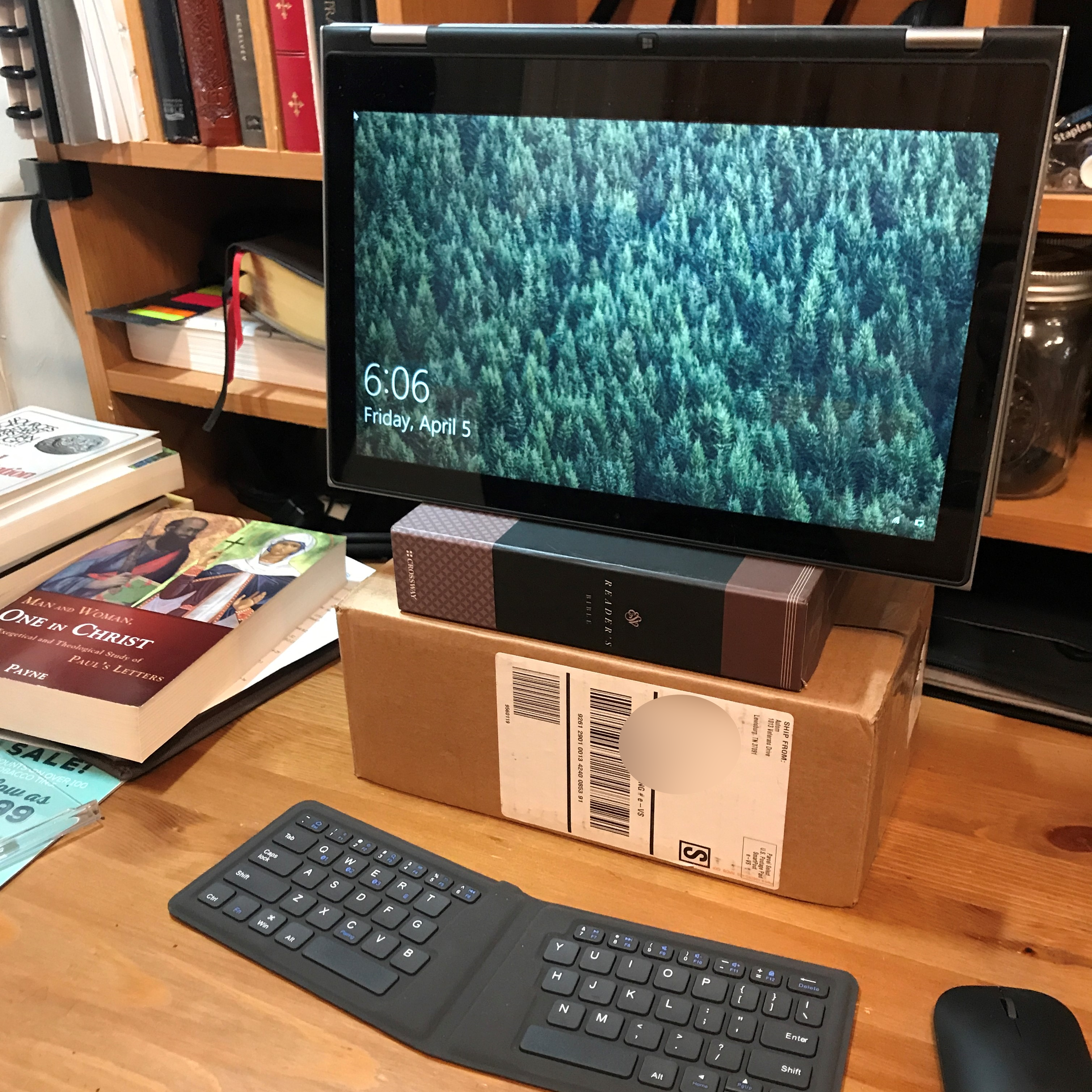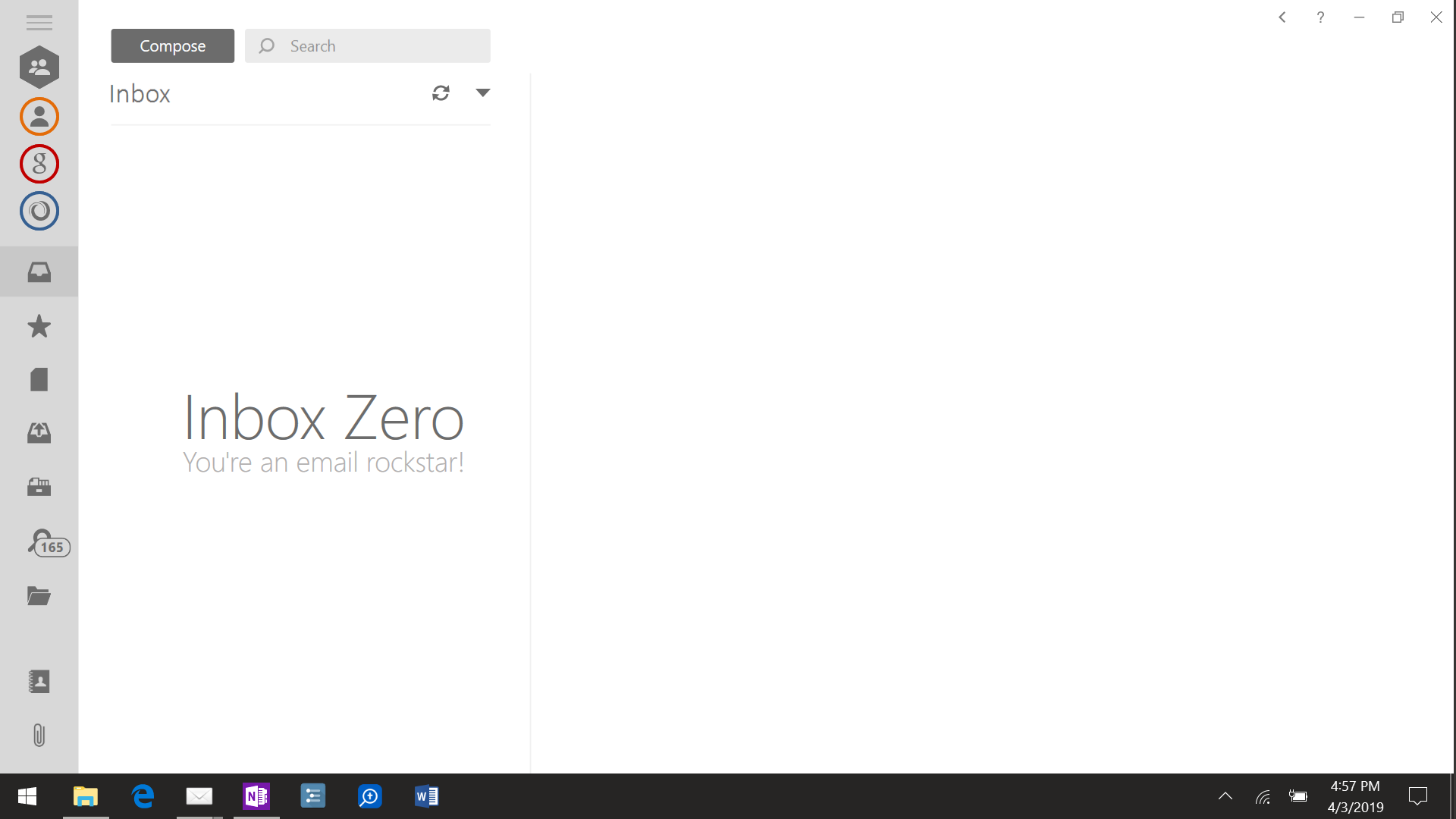The File Manager Strategy for Keeping and Organizing Your Notes
Over the past few years I have been an avid user of OneNote as a way to organize reference material, plan projects, and keep personal notes. However, I have been increasingly frustrated by the direction its going in terms of how accessible your notes are. As Microsoft transitions to a more web-centric approach, your notes aren’t even fully available to you on your device; rather, they are stored in the cloud. Furthermore, there’s no easy export from the most up to date version of the app.
As I began to explore alternatives I realized that most note-taking applications suffer from the same drawback: they are hard to get your notes out of if you need to back up or take them to another service, and aren’t always available on every device, all the time. For me, the perfect notetaking application allows me to store reference files and writings in a way that’s easy to search, fully portable, easy to back up, and as future-proof as possible.
The more I thought about it, the more I realized the answer was right in front of me, and it was a strategy I had used in the past:
The file system.
Yes, just the humble file system on my laptop! It just makes sense.
- Notes can be in any format needed (image, plain text, RTF PDF, Word)
- Notes can be organized in virtually any way I like with a well thought out file structure and file names.
- Search is robust and built in, and can include things like size, type, date modified, date created, and more.
- Using apps like Dropbox, Google Drive, or OneDrive (but–sadly–not iCloud), all notes are fully searchable and available on any device with Internet access, while always being available offline where I need them to be.
- Since everything is just files in folders and synced via a web service, a single note or a group of notes can be shared with granular control.
- Backup is as easy as making a zip archive and throwing it on a USB drive.
Sometimes you just don’t have to reinvent the wheel.
I love these beautiful lilies my wife set out for Easter. Watching them bloom over the past week is a meaningful reminder that in the Great Tradition of the Church, Easter is an ongoing celebration, with its own multi-week season and every Sunday being a mini-Easter celebration in itself.

If you wonder why the Resurrection of Jesus is so important (and why it gives a real reason for hope), you could give my Easter sermon a listen.
How do I know that I’m saved? This is a question that plagues many faithful Christians, particularly those in Evangelical circles. With such a strong emphasis on a personal relationship with Jesus Christ, Evangelicalism has contributed to a false mindset in which salvation depends upon a person’s sense of being saved. If I don’t feel Jesus today—if I don’t feel all that saved— then how do I know that I really am saved? If only there were something outside of my personal feelings that revealed God’s love to me! Thanks be to God, there is.
Myles Hixon, “Maundy Thursday: A Collect Reflection” via Anglican Pastor

The ergonomic improvements from this simple shift to using a laptop stand and bluetooth keyboard are quite noticeable.

The laptop stand I got is super sturdy, looks great, and is decently portable.
Nulaxy Adjustable Laptop Stand
Other stuff in the photos:
A frictionless Weekly Review
For those of us that practice GTD to manage our commitments and keep them with integrity, the weekly review habit is crucial. This is the time each week when you take moment to break from the minutia, look up, and take stock of the situation by updating and looking over your lists of projects and next actions. Many of us find it difficult to keep a regular review habit, mostly because it takes effort, and—even though there is a psychological payoff—it’s easy to shrug off in the name of urgent demands on your time.
So anything I can do to make my weekly review easier, I want to do, which is why I am excited about sharing the fact that the last two weeks I have had the most frictionless weekly reviews I have ever had thanks to a tool called Workflowy (btw if you sign up for free at that link I will get a bit of a feature bump to my free plan).
It’s a deceptively simple piece of software; online outliners are a dime a dozen, but this one is fast, easy to use, and thanks to its robust search capabilities and tagging system, quite powerful as well.
All that said, it was the simplicity of it that made all the difference. I have a top level node labeled “GTD” with all my lists there. I can zoom in easily and just focus on the particular list I need, or zoom out and see the whole thing, which is what I did for my review. And it made it so easy, because I could just scroll through! No switching lists on different virtual pages, no complicated sorting. Just simple scrolling as if the whole thing was on a sheet of paper.
Absolutely brilliant.
It’s a different way of life to intentionally avoid the new and shiny to for the good of your wallet and your soul.
I notice that when I publish a draft in Micro.blog, it retains the date in the timeline that I created the draft, so it doesn’t get posted to the timeline. Interesting aspect of this functionality.
Makeshift laptop stand. I realized half of my chronic neck and shoulder pain is probably due to hunching over my computer.

GTD in 3 Minutes
In David Allen’s modern classic book on personal productivity, Getting Things Done he describes an ideal state of mind:
Imagine throwing a pebble into a still pond. How does the water respond? The answer is, totally appropriately to the force and mass of the input; then it returns to calm. It doesn't overreact or underreact.
A mind like water is a disciplined mind, a mind focused on the right things, at the right times. David Allen places this in the context of personal productivity, getting the things you need to get done, done. David Allen’s Getting Things Done system can help you clear the clutter from your daily task list and help you order your life in a way that is consistent with your values.
I think there’s actually a spiritual component to this, if we’re open to it: the very biblical concepts of stewardship and working “as for the Lord” (Colossians 3:23).
It’s so easy in the digital-age of distraction to forget the sacred trust of time that we’ve been given. In midst of “important” emails, social media notifications, and activity-packed schedules, we miss the important because we’re too preoccupied with the urgent. I’ll be the first to admit that I have sometimes gone weeks and then wondered why I haven’t made progress on the stuff that really matters to me. When that happens I know I haven’t been disciplined in my approach to managing the many things that demand and deserve my attention.
It’s possible to be very busy, but still procrastinate and put off the most important things. This naturally leads to anxiety, restlessness, and stress even though it might seem like you’re workin hard on the surface. This is where a disciplined system can be a huge help. It can help remove some of the friction of starting and finishing those tasks and projects that we just don’t want do, by providing clarity on exactly what we need to do next.
How to get things done
In a nutshell, David Allen's technique revolves around a 5 step process:- Capturing your ideas into a trusted system
- Clarifying what next action is needed on those ideas,
- Organizing ideas and next actions in a useful way
- Reflecting on and reviewing your lists on a regular basis
- Engaging (actually doing them).
Your tools don’t matter that much, as long as they actually get used.
To get started, don’t even worry about the whole system. Just concentrate on developing a habit of writing everything down, glancing over that list every week or so. It will change your life!
And that’s it, the basics of GTD in 3 minutes!
People say GTD requires too much time manging your lists. This is a feature, not a bug.
The longer I think on this, the more convinced I am that GTD really doesn’t ask you to do much with your lists. Simply moving things from your inbox and categorizing items by appropriate context (most people only have 5 or 6 at most, in my experience) takes a few minutes, possibly mere seconds with most software based solutions, if you do it once a day or once every two days.
I will grant the weekly review takes some more time, when you are going through your projects and identifying the next action and so on, but this is absolutely essential thinking that must be done anyways if you’re going to make progress on your projects. You’re just doing this “up-front,” batching together your thinking so you’re more agile and less-stressed later.
All of these seems very appropriate to me. I think the real issue is that if you’re spending hours managing lists, you’re either:
- allowing yourself to be distracted with the tool
- you have an overly-complex tool
- (and I think this one is most likely) you’re over-committed.
A principle way GTD reflects back to you that you have too many commitments is when it’s taking a disproportionate amount of time to review and process your inbox and next-actions lists.
You’re overly committed if you can’t find 15-20 min per day to clear your inbox. Similarly, if your weekly review is taking 3+ hours on the regular because you are overwhelmed with projects, it’s also likely you simply have too much on your plate.
I know I’ve over-scheduled my week when I can’t fit in my 1.5 hour weekly review, or when my inbox goes a 3 days or more without being cleared because I’m just too busy.
At least my email app gives me compliments.

“The priest is a priest at the altar; a priest in confession, he is a priest on the street; indeed, he is a priest everywhere”
~St John Bosco
FINALLY finished N. T. Wright’s magisterial The Resurrection of the Son of God (Christian Origins and the Question of God, Vol. 3), and while it took significant effort trek through all 750 pages of dense analysis, it was well worth the time and mental energy to make a thorough historical investigation into what the earliest Christians really believed about the resurrection of Jesus Christ.
Made it to the bottom of the Grand Canyon and back with my youngest brother, Mark!

Stewart Ruch III on Best Practices for Holy Week Preaching, and on preaching Easter Morning year after year.
…I’ve grown in this as a preacher—that I have learned how to renounce the expectation that I will preach a great sermon on Easter Day. I’ve learned to refuse to live by that. I do want to preach a great sermon on Easter Day. But if I go out with the result of preaching a great sermon on Easter Day then I’ve already lost the battle of the Easter Day sermon. So I really try to refuse to try and meet the expectation, usually my own and some others, frankly, that I preach a phenomenal sermon on Easter Day. I refuse that. I try to compartmentalize that and put that away, and I try, instead, to work really hard at asking: What’s the word for this year, Lord, from your Holy Scriptures? That’s what I’m going to preach.
The whole article is full of great pastoral wisdom.
Recently found carrd.co–essentially a one-page website builder (more on the philosophy of the platform) made by a really good designer. It is incredibly easy to use, even normal people can do it (although using a custom domain is–as always–a bit of a technical process) Pricing is very reasonable as well.
Just switched our church website over to it from WordPress. Now, you won’t be creating some kind of spawling personal blog (like this site) or a massive online magazine with this–it’s for brochure sites, landing pages, small business sites, and so on.
And for that it is a Godsend. For real.
Once you start really pealing back the layers on the Old Testament, you realize it’s grace all the way down. That’s just how God works.
 NRH
NRH